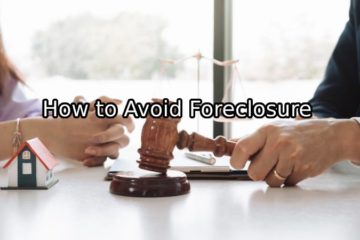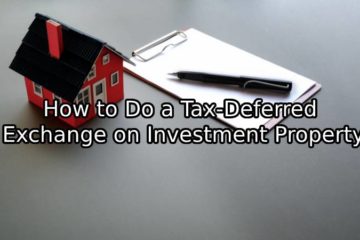There are six main types of properties to consider when investing in real estate:
- Single-family homes
- Multi-family homes
- Apartments
- Condos and co-ops
- Commercial property
- Raw land
Each type of property presents a unique set of features and responsibilities—from financial to personal—that the following sections explain.
Table of Contents
Single-family Homes
Single-family homes are self-standing residences occupied by one paying tenant, which can be a person or a group, such as a family. Single-family homes tend to increase in value more substantially than any other type of real estate investment for two reasons:
- Buyers prefer the privacy of single-family homes.
- Investors like the efficiency of dealing with only one tenant at a time.
But investors tend to buy property for income rather than just for price appreciation, so it’s important to consider these drawbacks about investing in single-family homes:
- Vacancies: Since single-family homes have just one tenant, you’ll depend entirely on that tenant’s ability to pay. Owning an apartment building or a multi-family home mitigates this problem: if one unit remains vacant or one tenant fails to pay, the other tenants’ payments can help you cover your costs until you fill the vacancy or find a new tenant.
- Smaller supply of renters: Single-family home renters must have a more substantial income stream than those who rent apartments or condos, which are almost always cheaper than single-family homes. In addition, most single-family home renters expect to rent for periods of at least a year or more, whereas condo and apartment renters often expect to rent for just the summer or on a month-to-month basis. These factors can make it more difficult to find tenants for single-family homes.
Multi-family Homes
Multi-family homes are self-standing residences occupied by two or more paying tenants, such as two individuals or families. Multi-family homes usually look like single-family homes but include two or more separate entrances to provide the tenants some degree of privacy. Investors should keep the following tips in mind when deciding whether to invest in a multi-family home:
Tips on Multi-Family Homes for Real Estate Investors
- Limited buyers: Typically, the only buyers who tend to be interested in multi-family homes are other real estate investors (though you may be able to find an owner-occupier, an investor who also lives in the property). The limited number of potential buyers means that selling a multi-family property can be more difficult than selling a single-family home or other investment property.
- Limited rent payments: Though multi-family homes often look like standalone single-family homes, to renters they’re like apartments—not private and, therefore, not worthy of the high rents that single-family-home owners can charge. That means you should expect to charge about the same rent that an apartment owner in your neighborhood would charge.
Apartments
Apartments are individual housing units grouped together within a single building. They’re usually among the least desirable, and therefore the cheapest, housing option. Real estate investors can buy a single apartment within an apartment building or buy an entire building.
Tips on Apartments for Real Estate Investors
- Easy upgrades: Investors can often increase the value of an apartment by buying property in good condition that just needs a little maintenance work. Combining a few minor upgrades, such as fresh paint, new appliances, or new carpet, can often boost the property value and increase the amount of rent you can charge.
- Minimal oversight: Unlike condo and co-op buildings, apartment buildings don’t have central governing bodies, such as an ownership association or board. That means that as an investor you’ll have to deal with far less bureaucratic red tape. You also won’t be subject to the whims of the association or board, which can levy fines for violations and special assessments for overall improvements to the property.
- Rent and tenants: Since apartments are relatively inexpensive for tenants, it’s usually easy to fill vacancies. At the same time, you should expect to charge slightly lower rent for an apartment than for a comparable condo or co-op in the area.
Condos and Co-ops
Condos and co-ops are usually like apartments in structure, but with slightly different ownership arrangements.
- Condos: The property owner owns only the airspace and interior surfaces of the unit, such as walls, floors, and ceilings. A central governing body, called a homeowners association (HOA), owns and is responsible for everything else in and on the property, including the roof, plumbing, electrical, foundation, common areas, and land. The homeowner pays monthly HOA dues to help pay for property maintenance, such as landscaping, utilities in common areas, and so on.
- Co-ops: The property owner is a shareholder in a company that owns the entire building. A central governing body, known as a co-op board, oversees the management and maintenance of the property. Co-op boards typically charge dues to the co-op shareholders and tend to be more restrictive than condo HOAs.
Tips on Condos and Co-ops for Real Estate Investors
- Regulation: Condo HOAs and co-op boards usually have specific rules that can govern everything from items you can place in your windows to renovations you can make to your property. Some also restrict whether you can rent or sublet your property. If you’re looking to have complete control over your investment property, consider a single- or multi-family home or an apartment instead of a condo or co-op.
- Tenant restrictions: Some condo HOAs and most co-op boards have strict qualifications, such as income levels, that potential renters must meet. These restrictions can make it challenging for investors to rent out vacant properties quickly.
- Minimal effort: Condos and co-ops are the closest thing to maintenance-free living, short of living full-time in a hotel. In most condos and co-ops, the HOA or board takes care of everything from hiring groundskeepers to putting up holiday decor. All you have to do is live in—or rent out—your property. The flip side is that you have to pay monthly fees.
Commercial Property
Commercial property includes office, retail, and industrial buildings. Investing in this type of property takes a little more know-how and is riskier than investing in residential real estate, mostly because the value and vacancy rates of commercial property are tied directly to the local economy, which can change quickly. If you’re just starting out in real estate investing, it’s probably best to begin with residential buildings.
Raw Land
Since investors can rarely rent raw (undeveloped) land, it’s crucial to buy land with a strong potential for price appreciation. Land most likely to rise in value is located in the path of progress—areas in which the population and local economy seem poised for growth. As demand for housing and commercial buildings grows in that area, the value of your land will rise. Note that raw land tends to appreciate in value more slowly than property with existing buildings, so it’s crucial to have a long time horizon when investing in raw land.
Tips on Raw Land for Real Estate Investors
- Zoning restrictions: A variety of types of zoning restrictions govern how landowners can develop land. For instance, some land can be used only for single-family residential housing, while other land is “zoned commercial,” meaning it can be used for business. Always confirm that the zoning restrictions on your land won’t impede your development plans.
- Bordering properties: Before you buy any piece of land, obtain maps of the property from the local government (most town halls or county governments have a property division that archives maps and other documents). Inspect the maps closely to determine what type of land borders the property that interests you. For instance, a land bordering protected government property, such as a national forest, is considered more desirable than land bordering private property. Also be sure the zoning of the property bordering yours conforms to your plans and expectations—if it doesn’t, you could end up with a shopping mall or an office building in your backyard.


